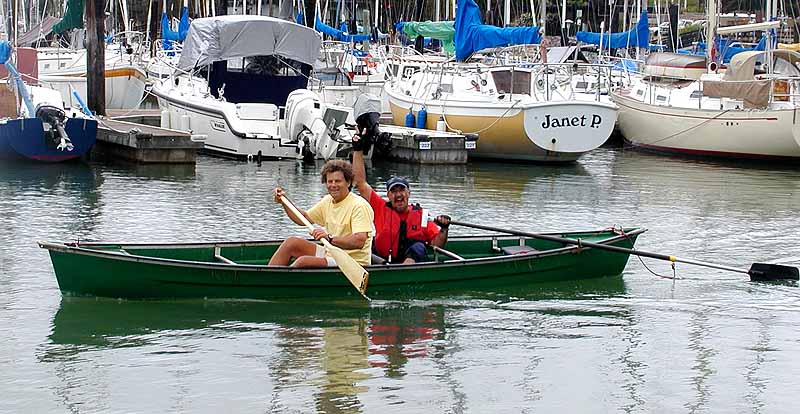
|

|
|
Materials list:
Tools Needed:
Assembly Instructions: Detailed instructions to be added eventually. But you can probably figure out everything you need to know from the photos. Meanwhile, a few tips: The new paddler's seat should be installed so that the height of the seat is the same distance above the water as the seats in the dragon boat. The height of the seat above the bottom of the canoe will necessarily be much less than the height of the seats in the dragon boat. Take out the aft support of the original front seat, but leave the forward support of the front seat in place as a foot brace. Make sure the oarlock ring is captive on the steering oar between the T handle and the blade, and that there is a safety line keeping the oar connected to the canoe. Do not try to get away with only one oarlock. You need two for the geometry to work with the paddler on either side. The big fender washers are for attaching the aluminum angles that hold the seat to the sides of the hull. They go on the outside of the hull where the bolts go through, and prevent the bolts from cutting through the soft plastic hull.
Notes: Dragon boat coaches are faced with a difficult task when it comes to evaluating the performance of individual team members. Concentrating on form and timing alone often misses the point; what is needed is an objective method of determining how much boat speed each paddler is contributing to the team. Even the best stationary dynamometer gives misleading results, because heavy paddlers, while stronger, also add to resistance with more weight in the boat. A canoe, although moving considerably slower than a dragon boat (typically around 4 knots instead of 7.5) is the best low-cost solution. It models the relative effects of strength, endurance, paddling form, and body weight with reasonable accuracy. In operation, the paddler sits on their preferred side and uses a normal dragon boat paddle. The steersperson sits right behind them, on the opposite side to balance the canoe. The oarlock for the steering oar should be placed in the oarlock fitting on the same side as the paddler. The length of the time trial course used in Berkeley is 194 meters, producing times in the 1:30 to 1:45 range for competitive male paddlers and about 1:55 - 2:10 for women. The distance is not as important as having very clearly marked start and finish points, so that a variety of steerspeople will all run the trial over exactly the same distance. To best represent the effect of paddler body weight on dragon boat performance, the steersperson should weigh approximately the same amount as the paddler. If there is a significant difference, the time should be corrected using the "two-ninths rule," a rule of thumb which estimates percentage change in speed as two-ninths (0.222) of the percentage change in weight. The steering dynamics of the time trial canoe are similar to those of a full size dragon boat, except that things happen faster and with a lot less force required. It is an ideal boat for training new steerspeople who need time with a steering oar to develop proper control reflexes. |